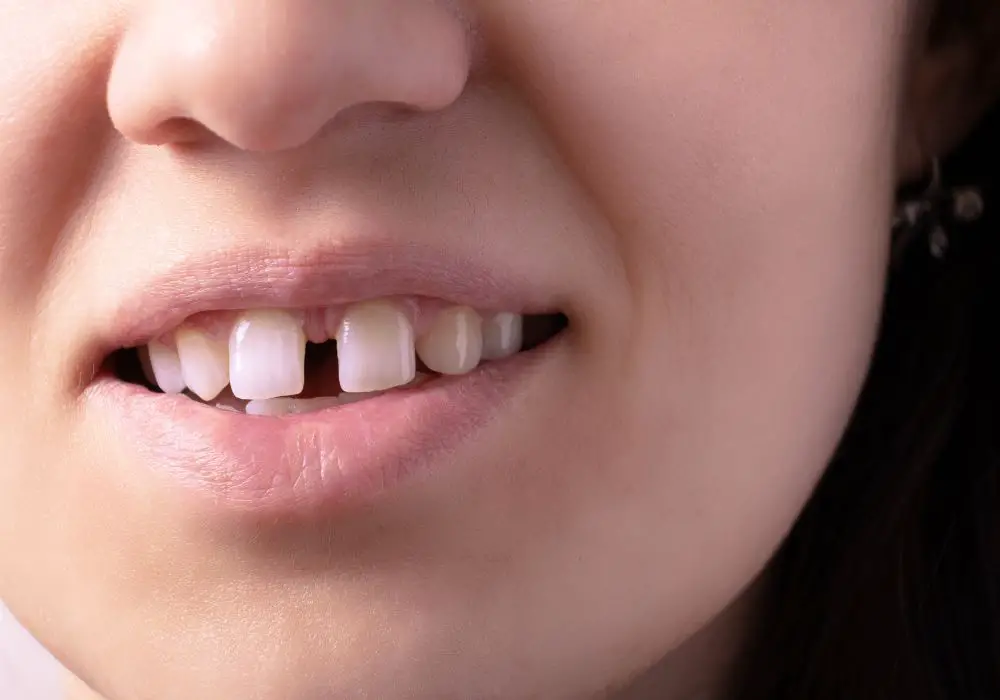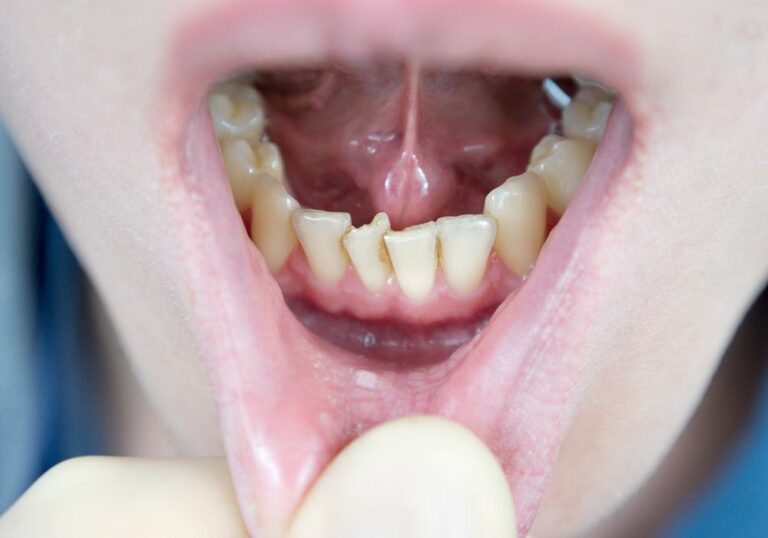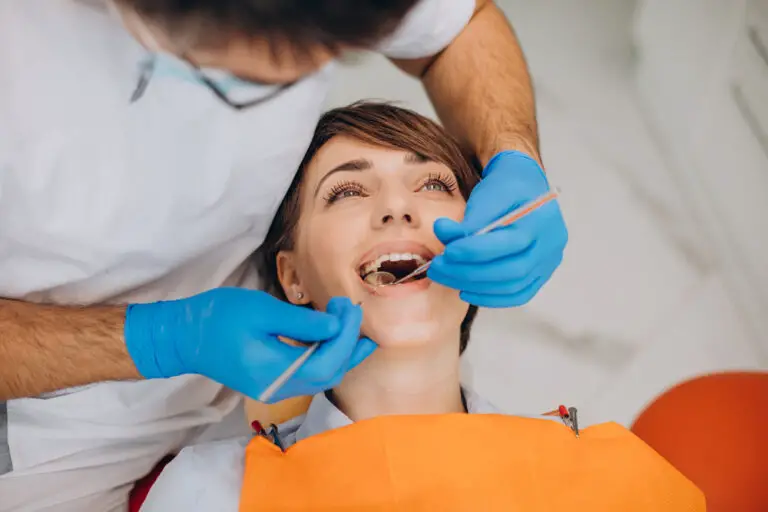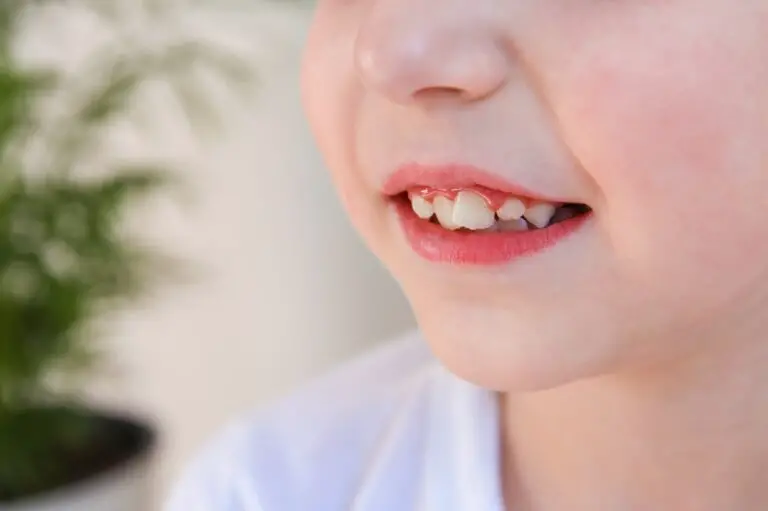Noticing a new gap between your teeth that wasn’t there before can be startling and concerning. Has your dental health suddenly deteriorated? Did you chip a tooth without realizing it? Understanding why these gaps appear seemingly out of nowhere will help you seek appropriate treatment to resolve the issue before it worsens.
Causes of Gaps Developing Between Previously Aligned Teeth
A number of different structural problems can generate gaps between teeth that were once solidly joined together. The origin of the space provides insight into how to close it. Here are reasons you may suddenly find distinct gaps:
Receding Gums Expose Additional Tooth
Although slight “long in the tooth” gum loss occurs naturally with aging, substantial recession also stems from periodontal infections and overly zealous brushing. As more root surface becomes visible, normal gaps between teeth appear exaggerated. Treating gum disease and adopting gentler hygiene habits allows possible regrowth to cover exposed roots.
Periodontal Infections Break Down Tooth-Supporting Bone
Chronic bacterial gum disease destroys the alveolar bone holding teeth tightly in place. This bone damage first manifests as pockets around teeth filled with plaque. But as infections progress, collagen fibers attaching to bone deteriorate. With this weakened foundation, teeth loosen and drift apart into gaps. Treating advanced periodontitis with deep cleanings and grafting helps reinforce and rebuild support.
Cracked, Fractured Teeth Change Shape
An unnoticed crack or fracture makes a tooth smaller and uneven, leaving empty space next to healthy neighboring teeth with normal dimensions. The damaged portion often requires removal and restoration with a crown or implant to regain original contours and closed contact.
Expanding Cavities Demineralize Tooth Structure

Tooth decay eats away enamel and dentin, causing deterioration. Adjacent uninvolved teeth remain at full size, while the shrinking decayed tooth develops gaps around it. Filling cavities halts loss of tooth structure and restores proper shape and size to fill spacing.
Bruxism Grinds Teeth Down Over Time
Habitual grinding, clenching, and chewing motions literally wear teeth thinner and smaller. But adjacent teeth stay intact. This discrepancy in width leaves noticeable gap spaces. Preventing further abrasion with a night guard allows conservative reshaping and bonding to close minor gaps.
Improper Bite Alignment Pushes Teeth Apart
Developmental occlusal issues like crossbites put uneven pressures on teeth, slowly forcing them out of position. The misaligned bite could separate teeth slightly over many years. Orthodontic adjustment of the bite relationship brings teeth back together.
Dental Restorations Don’t Match Natural Tooth Expansion
While natural teeth expand microscopically over decades from chewing pressures, bonded fillings and dental crowns remain static in size. This causes slight gaps to eventually appear next to the restoration edges. Replacement with larger sized restorations closes the gap.
Warning Signs of Problematic New Gaps
Watch for these worrisome indicators that suggest a new space between teeth needs prompt attention:
- Highly visible gap looking obviously wider
- Food, floss, or debris catching in the opening
- Tooth/teeth near the gap feel loose or wiggly
- Discoloration, pits, or translucent areas around the gap
- Sharp pain from hot/cold/sweets around the gap
- Chewing and biting problems due to the gap
- Altered appearance or symmetry of your smile
- “Whistling” noise breathing through the gap
This represents accelerated damage beyond normal small grooves from minor gum loss or enamel wear. Letting the situation worsen risks tooth loss, so it’s important to seek treatment quickly.
Potential Problems Caused by Gaps Between Teeth

While small natural gaps and overlaps don’t affect function, quickly developing sizable spaces lead to issues:
Accelerated Tooth Decay
Gaps trap food particles and make plaque removal difficult. This feeds decay-causing bacteria and leads to extensive cavities on adjacent teeth.
Gum Disease Progression
Gaps allow more plaque buildup that inflames gums, enabling advanced periodontal infections to develop. Ongoing bone loss worsens the gap over time.
Jaw Joint Strains
The changed contact and biting forces caused by gaps put strain on the TMJ. This leads to damage and symptoms like clicking, popping, and pain.
Additional Bone Loss
Around very loose teeth, the periodontal ligaments and bone atrophy from lack of normal chewing pressures. This allows more loosening and gap widening.
Higher Risk of Tooth Fractures
With open spaces, the remaining teeth sustain greater biting forces than intended. Cracks and fractures result. Eventually the broken piece ruptures off, enlarging the gap further.
Impaired Speech
Gaps wider than 3mm between front teeth allow air leakage that affects pronunciation of some letters. A whistle or lispy sound results. Oral hygiene is hindered too.
Dental Treatments That Can Close Gaps Between Teeth

Several options exist to close the empty spaces:
- Direct composite bonding fills small gaps with tooth-colored material for quick improvement.
- Dental crowns fully cover damaged teeth to rebuild normal contours and size.
- Orthodontic braces shift teeth back into tight alignment over months. Retainers prevent gaps returning.
- Tooth extraction removes badly damaged teeth, so adjacent teeth drift naturally into the vacant space.
- Dental implants replace missing teeth, preventing space and drift of nearby teeth.
- Fixed bridges use false teeth to fill the space of an extracted or missing tooth.
- Clear plastic aligners gradually push teeth together over weeks to close gaps.
- Veneers or lumineers bonded to teeth reshape and enlarge their size to fill the gap.
Seeking Answers for Your New Dental Gap
Don’t ignore a gap that suddenly appears between your teeth. Consult your dentist promptly to determine the underlying cause and recommended solution. Left untreated, gaps allow damage to spread to remaining teeth. But modern dental treatments can effectively and safely close spaces between teeth and restore your smile. With the right approach, you can chew properly, prevent decay and infection, and feel confident again.
Frequently Asked Questions
What typically causes a new gap to open between front teeth?
Causes include fractured edges, receding inflamed gums, untreated decay, shifted orthodontics, cracked enamel from bruxism, ill-fitting dental work. A dental exam identifies the reason to guide appropriate treatment.
Can braces close the gap between my teeth?
Yes, orthodontic braces or clear aligners safely shift teeth to fill spaces. Braces provide the most control for large gaps. Clear aligners are more discreet. Retainers prevent gaps returning once closed.
How can I tell if a gap means I have gum disease?
Receding inflamed gums from periodontal infections cause spaces as more tooth roots become exposed. But fractures, decay, and shifting teeth also create gaps. A dental exam identifies gum disease and helps guide treatment to regrow healthy gums.
Is getting a gap between front teeth normal with age?
Larger front gaps are not normal at any age. Slow gum loss over decades can create small natural spaces up to 1mm. More pronounced new gaps signify dental problems needing treatment. Don’t ignore new gaps.
Should I urgently address a slight gap between teeth?
Small gaps under 2 to 3mm generally don’t rapidly worsen. But if food impaction, pain, or bigger spaces develop quickly, see your dentist right away. Prompt treatment prevents damage progression and eases repairs before extensive treatment is needed.






